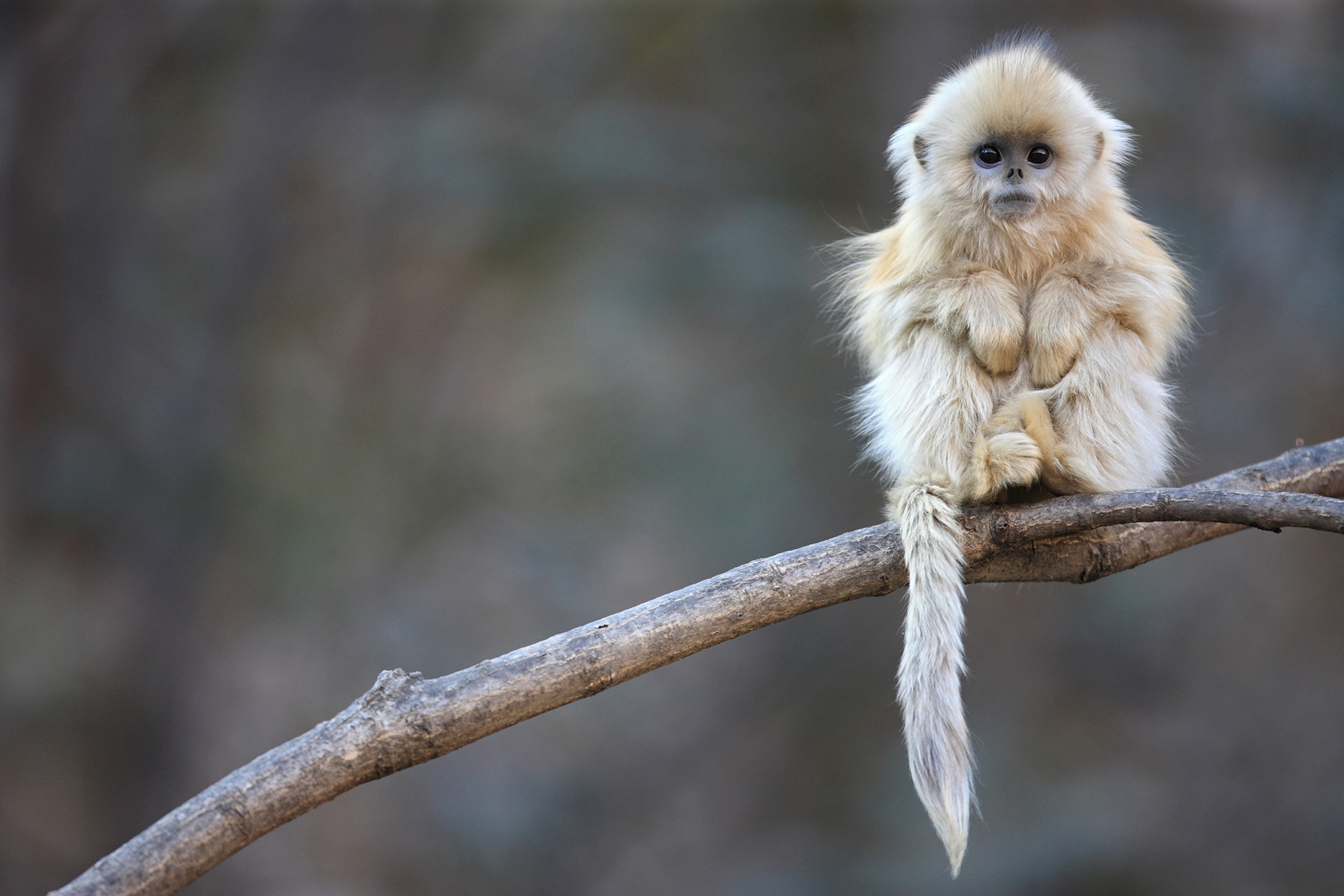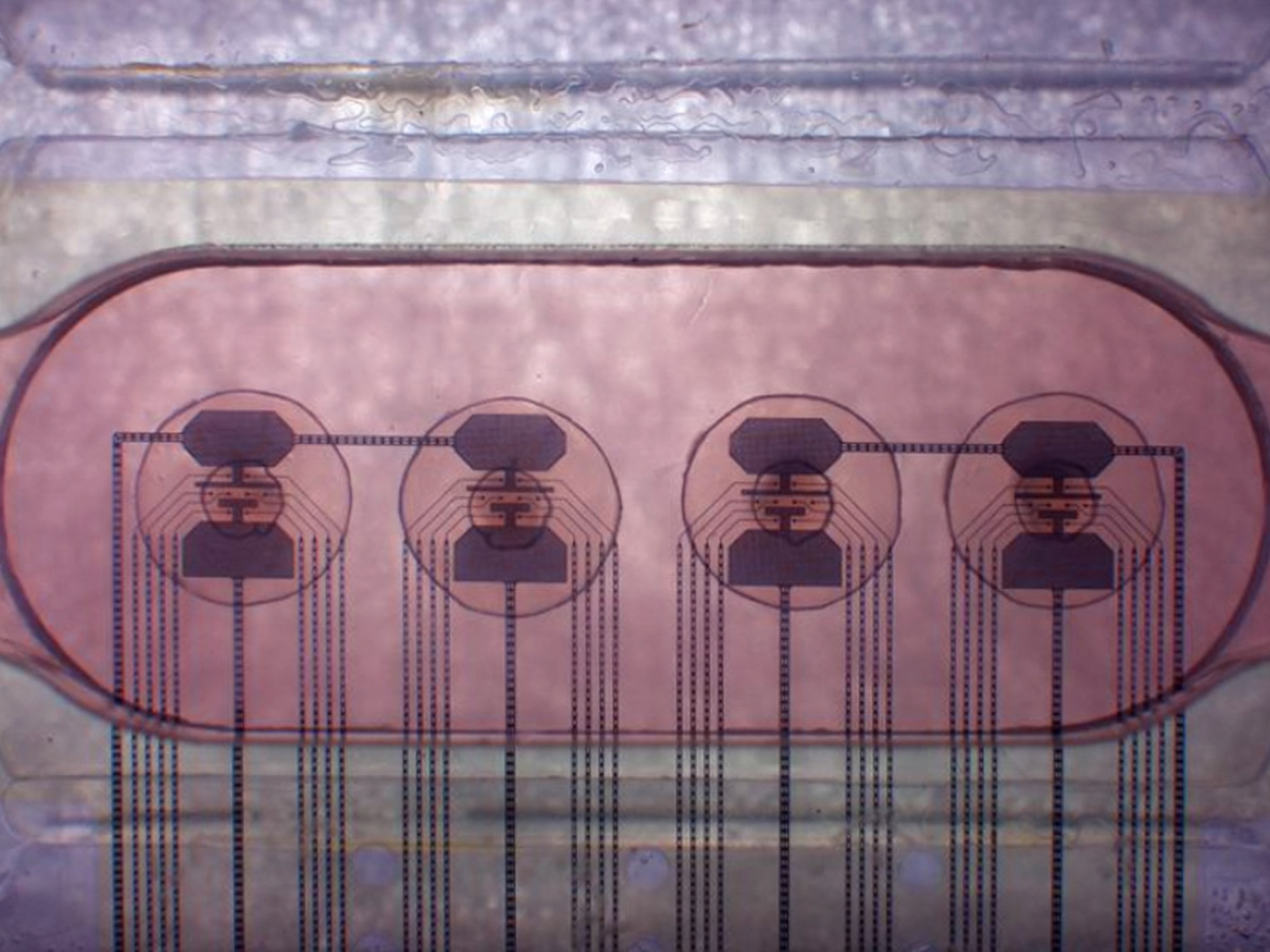Monkey Clones Created in the Lab. Now What?
In a controversial milestone, researchers have cloned a pair of macaques using a method that could, in theory, be used to clone humans.
In a world first, Chinese researchers have successfully cloned macaques using the same technique that yielded the famous clone Dolly the sheep. The milestone, published in Cell on Wednesday, marks the first time that primates have ever been cloned in such a manner.
The years-long effort, led by Chinese Academy of Sciences postdoctoral fellow Zhen Liu, culminated in the recent birth of two female macaques, Zhong Zhong and Hua Hua. The macaques’ names are drawn from the word zhonghua, an adjective for the Chinese people.
The two macaques—eight weeks and six weeks old—are genetically identical, both clones of the same donor culture of fetal monkey cells. The young monkeys are reportedly healthy and currently live in an incubator.
The discovery potentially leads to a brave new world of biomedical research and will unquestionably spark debate over cloning another primate species: humans. Here’s everything you need to know about these potentially controversial clones.
ARE THESE THE FIRST CLONED MONKEYS?
Technically, no. In 1999, researchers “cloned” a rhesus macaque by splitting an early-stage macaque embryo into multiple parts—in effect, creating artificial identical twins. Other research showed that monkey cells could be cloned to create lines of stem cells. However, these efforts yielded only cells confined to petri dishes, not fully developed monkeys.
“It’s about time, because I thought it would never happen,” says Shoukhrat Mitalipov, the head of Oregon Health and Science University’s Center for Embryonic Cell and Gene Therapy. He wasn’t involved with the study, but he worked on previous monkey-cloning efforts.
SO WHY IS THIS A BIG DEAL?
In 1996, Dolly the sheep became the first mammal cloned using a technique called somatic cell nuclear transfer. Unlike embryo splitting, which can only yield a few copies, this method can theoretically produce an indefinite number of clones from a single donor. This lets researchers craft customizable, genetically uniform populations of animals with potential for biomedical research.
Since then, scientists have cloned more than 20 species—from cows to rabbits to dogs—using this technique, but the Chinese effort marks the first time that non-human primates have been cloned successfully in the same way. This is a big deal, because the cloning technique in this study may apply to other primates such as humans. However, the study’s authors stress that they have no intention of cloning humans.
HOW DOES THIS CLONING METHOD WORK?
In animals such as sheep and monkeys, individuals have a bundle inside every cell called a nucleus, which contains a copy of their distinct genetic code. Somatic cell nuclear transfer involves delicately transferring the nucleus from one animal’s cell into another animal’s egg.
They then chemically prod the egg into developing, as if it had been naturally fertilized. If this embryo reaches a certain stage of development, scientists can then implant it into the surrogate. If the procedure is successful, the surrogate will get pregnant and give birth to an animal that is genetically identical to the nucleus donor.

WHY DID IT TAKE SO LONG TO CLONE PRIMATES THIS WAY?
The full process isn’t as simple as plucking a nucleus out of a skin cell, plugging it into an egg, and expecting it to form a flawless clone. As embryonic cells differentiate into skin, muscle, and other tissues, their DNA gets spooled, bunched up, and tagged so that only specific genes are expressed within any given cell type. It’s a bit like reading a choose-your-own-adventure book, settling on a particular plot you like, and gluing together the pages you skipped.
To increase the odds of success, researchers must nudge the donor nucleus’s DNA into resembling the DNA of a young embryo. Turning back this genetic clock requires complex chemical protocols that must be fine-tuned for individual species. In part, this is why monkey cloning long proved elusive. The team in China tried several versions of the method before one worked, says study coauthor Qiang Sun, director of the Nonhuman Primate Research Facility at the Chinese Academy of Sciences Institute of Neuroscience.
Sun’s team temporarily bathed the clone eggs in trichostatin A, a compound that helped ensure the donor DNA didn’t bunch up. They also prodded the eggs to make enzymes that snipped certain chemical tags off the donor DNA, freeing up locked embryonic genes. The researchers also tried creating clones from both adult and fetal cells, but only clones derived from fetal cells survived. It’s thought that the fetal cells were less “hardened” into their cell types than the adult cells, but because the fetal cells were differentiated, they too required reprogramming.
WHY CLONE MONKEYS IN THE FIRST PLACE?
The researchers say that they want to use this technique to breed macaques for biomedical research. Exact genetic copies of the same animal would reduce the variability in results when testing new drugs or other therapies.
“For the cloning of primate species, including humans, the technical barrier is now broken,” says study coauthor Mu-Ming Poo, who directs the Center for Excellence in Brain Science and Intelligence Technology at the Chinese Academy of Sciences. “However, the reason we chose to break this barrier is to produce animal models that are useful for human medicine. There’s no intention to apply this method to humans.”
Koen Van Rompay, a virologist at the California National Primate Research Center, thinks that such clones would be useful in the long run: “If there would be an efficient way to clone monkeys, that could actually reduce the number of monkeys needed to answer a certain research question,” he says.
Van Rompay and Mitalipov caution, however, that the promised therapeutic benefits may not be right around the corner. For one, the technique doesn’t strike them as particularly efficient. Of the team’s 21 cloning attempts using fetal donor cells, only two resulted in healthy live births. What’s more, Zhong Zhong and Hua Hua are only two months old. Researchers don’t yet know what infirmities, if any, will afflict them later in life as a result of being cloned.
“This is just a step,” says Van Rompay. “We are not ready to clone monkeys large-scale.”
BUT IS IT ETHICAL TO MAKE CLONES?
The use of non-human primates as lab animals has long been contentious. Animal-welfare groups have cast experiments on non-human primates as cruel, exactly because of the animals’ similarities to humans. They also express concern over cloning itself, pointing to miscarriages, sterile social environments, human hand-raising, and other unnatural stressors.
“It gives this sense that animals are disposable and commodities for us to use,” says Kathleen Conlee, vice president of animal research issues at the Humane Society of the United States. “Is this appropriate, to have an animal you can do whatever you want to? ... It creates a poor dynamic about how we treat animals overall.”
China, in particular, faces high scrutiny on matters of animal welfare because it has no comprehensive laws against animal cruelty. The study authors say that their facilities follow animal-welfare regulations set by the U.S. National Institutes of Health and that they are attentive to the macaques’ welfare.
It’s possible that improvements in genetics and computer modeling will limit the need for lab monkeys, says Eliza Bliss-Moreau, a behavioral neuroscientist at the California National Primate Research Center. “Technology has advanced so much in the last decade,” she says. “Some of the questions that you would think of in behavioral neuroscience as being targets for [cloning], we’re already tackling in other ways.”
But many biomedical researchers insist that primate models are still necessary for studying complex human diseases and disorders, from Parkinson’s to HIV/AIDS to autism. “I don’t think there will ever be a way we can avoid non-human primates in biomedical research,” says Van Rompay. “If that happens, that would be great, but right now, in-vitro and computer models are not sufficient.”
Johns Hopkins University bioethicist Jeffrey Kahn, an expert on the use of primates in biomedical research, says that the questions this new study poses are complex: “Should we invest in this or organs on a chip? I don’t think it’s that simple.”
WHAT DOES THIS MEAN FOR CLONING HUMANS?
In short, this study suggests that human cloning could be technically possible in a matter of months to years. “The genie’s out of the bottle now,” says Jose Cibelli, a cloning expert at Michigan State University who wasn’t involved with this study.
Whether reproductive human cloning should proceed, however, is another question entirely. All of the scientists interviewed by National Geographic stressed that at present, human cloning would be unnecessary and irresponsible. “There’s no reason to clone humans at this time,” says Poo. “There must be international discussion on this issue.”
Bioethicist Kahn urges a global discussion, as well: “What should we do about it—the ‘we’ being societies, countries, oversight bodies, governments?” he says. “What kind of governance do we think is necessary to prevent bad things from happening to humans, in the context of technology like this?”
WHAT’S NEXT?
The Chinese research team says that they will monitor the long-term health of Zhong Zhong and Hua Hua, including the pair’s brain development. The coauthors also say that the government of Shanghai strongly supports their research and is underwriting plans to expand their laboratory by more than tenfold. In addition, they expressed hope that Chinese society—which is rapidly shifting its views on animal welfare—will keep an open mind to conducting research on non-human primates.
“With all this improvement, along with the high standards of ethical concerns, I think that Chinese society will accept this,” says Poo. “I hope that societies in Western countries will realize once we demonstrate the cloned monkeys’ usefulness in curing disease, they will gradually change their mind.”
























